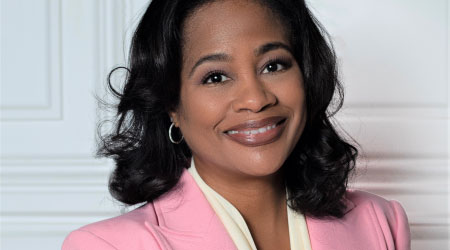From work to workplace
Systems furniture largely defines the open office. The facility executive’s job is making sure the work space matches the work being done.
Creating an office plan that works can be like trying to solve a Rubik’s cube. Each aspect of the space should be considered in relation to the others, and altering one thing can change the shape of the entire puzzle. Systems furniture is one crucial piece of that puzzle, influencing a range of key workplace parameters, from efficiency to collaboration to image.
The phrase “systems furniture” shouldn’t necessarily conjure up an image of a drab work environment. Today, there is a wide range of options to be considered. The key to evaluating choices is to understand how systems furniture is connected to the overall goals for the space.
“Facility executives should start by asking what they like about their current systems furniture and workplace, and where they would like see improvement,” says Kelly Sterk, manager of workplace research, Allsteel. This will make it easier to evaluate both what is needed and what to avoid with new systems furniture. Among the key points to include in an evaluation are productivity, acoustics, aesthetics, cost and flexibility.
Productivity
There are no universally accepted metrics that directly measure the impact of the workspace on productivity, so facility executives should consider indirect factors that may enhance productivity and worker satisfaction.
“Productivity is something that virtually everyone is after, but it’s really difficult to empirically prove that any particular system or layout will increase worker productivity by ‘X’ amount,” says Sterk. “Factors such as lighting, indoor air quality, chair comfort and control over distractions have been shown to have a positive link to productivity.”
In assessing the factors that affect productivity, it’s helpful to start with worker needs and how they can be accommodated. This means understanding what types of work employees are engaged in and what the needs for those activities are.
“It’s important to ask what kind of work environment you are trying to create,” says John Lubbinge, director of product management, Herman Miller. “Do you want an environment that fosters collaboration, heads down work or community? A lot of companies are trying to do all three.”
Most workspaces will at least have to accommodate the need for both heads down work and collaboration, so it is important to have a space for both. What this means for facility executives is giving employees a sense of control over their workspace, providing the flexibility to create the kind of work environment they need.
“Workers like to have control, and both a sense of privacy and collaboration,” says Mark Schurman, director, corporate communications, Herman Miller. “The idea of ‘permeable privacy’ is that you can create a level of privacy that workers can open up when they need to.”
Jim Falling, product marketing manager, Steelcase, agrees. He says it helps to look at how the most productive employees work and how systems furniture can both accommodate those work styles and encourage other employees to adopt them.
“There are two different elements when it comes to systems furniture — efficiency and effectiveness,” says Falling. “Facility executives should pay attention to how effective members of a team work.”
Recent research has revealed that when people work in pairs they tend to be more effective, says Falling. Research has found that dyadic work — work done between two people — leads to faster decision making, better problem solving and improved negotiation. Falling says that traditional workstations are designed for single-person work. A workspace that easily accommodates two people makes dyadic work more possible. At the same time, “fence talking,” or speaking loudly over workstation walls, can be mitigated, reducing a source of distraction for other workers.
Distractions, both visual and auditory, are another factor that affects employee productivity, says Richard Henson, systems product line manager, Kimball Office. Facility executives should try to minimize the potential for distraction by ensuring that the systems furniture allows workers to shut themselves off when heads-down work is needed.
“Visual distraction can increase auditory distraction,” says Henson. “If you see someone typing or talking on the phone, the auditory distraction is increased.” Controlling visual distractions enables the brain to adapt more quickly to background noise or sound masking.
Experts point out that while there are ways systems furniture can help decrease noise levels for individual workers — having seamless panel connections and panels that go all the way to the ground can minimize the noise that seeps into an individual workstations, for example — elements like flooring and ceiling tiles have a much more significant impact on overall sound control.
“There are acoustical ratings within systems office furniture, but those numbers are much less important than how workers are positioned in workstations, sound masking and visual privacy,” says Henson. “Noise transmits through, under and around panels.”
Feels Like Home
In addition to having a sense of control over their environment, employees should feel comfortable in their workspace, and facility executives should consider things like light, air flow, accessibility and the ability to alter or customize the space. For example, increasing the amount of natural light that enters a space can increase employee comfort, and this can be accomplished by systems furniture with lower panels that allow more light in.
“Typically private offices were on the outer perimeter of a space and the systems were on the interior,” says Henson. “Now we are seeing a move away from this to having systems with lower panel walls near windows to let in natural light.”
Some newer systems furniture systems are being designed to have a “cockpit” feel, says Schurman. These systems are designed so that items within the space are within easy reach; systems may also include sliding windows or doors and adjustable work surfaces. Having sliding panels contributes to the control of the workspace, allowing workers to create privacy when needed, and to modify the space for teamwork.
“People are looking for products that remind them of home, like bookcases and storage units,” says Schurman. “A lot of new products are geared toward companies that feel furniture can attract talent.”
Flexibility and Cost
The first costs for systems furniture are likely to be the most prominent for facility executives, but long-term costs should be considered also. These costs relate to how much it will cost to reconfigure the furniture as a result of churn, developments in technology and changing needs of workers. With facility executives always under pressure to conserve real estate, it’s important to make sure that the systems furniture solution will provide the most flexibility for the best cost.
“We are at an interesting point in workplace evolution,” says Henson. “There are a lot of dichotomies.” Facility executives have to consider systems furniture in terms of both wireless and hard-wired technology; the paperless office and the need for storage; privacy needs and group work; and the need to satisfy workers and allow for churn.
The need for flexibility within the workplace can be addressed with flexibility in systems furniture itself. Frame and tile systems (rather than single wall panels) can create aesthetic detail and make it easier to change wiring configurations and alter the height of the panels for different workers’ needs. Free moving screens can help create privacy when needed and can incorporate white boards or projection screens to encourage impromptu meetings or brainstorming sessions.
In addition to considering the flexibility of systems furniture, facility executives should consider the quality of the furniture in light of future needs, says Bill Davies, president, Davies Office Refurbishing. It is important to look at the durability of the furniture, because some systems may have the features a facility executive is looking for at a cost that seems like a bargain, but may not hold up over the long run, says Davies.
Henson says that the best way to ensure that systems furniture will meet facility needs is to request mock-ups from bidders. Seeing a model of what a vendor is offering for a specified price will help facility executives gauge whether the product will fit into current and future plans.
“The most important thing facility executives should ask is, ‘how much do I need to future-proof my furniture?’” says Falling.
Reuse, Recycle
Sustainability and environmental stewardship are increasingly important issues to many organizations, and systems furniture can be a part of this framework. Systems furniture with lower panel heights or glass panels and individually adjusted task lighting can contribute to Leadership in Energy and Environmental Design (LEED) credits, and so can products that use low-VOC emitting materials. Remanufactured furniture can also contribute to LEED credits, says Davies, and it can help contribute to a cycle of reuse.
The remanufacturing process involves evaluating the condition of systems furniture that has been previously used and replacing the fabric and refurbishing the metal framework. The remanufacturing process uses significantly fewer steps to produce usable furniture than a build-new process, because the core elements of the system are already in place. Because the remanufacturing process uses less energy, and because the products use recycled and low-VOC emitting materials, remanufactured furniture can contribute to LEED credits, says Davies. Remanufactured furniture can offer facility executives a cost-effective solution for furniture needs, says Davies, and should also be considered for systems furniture that is no longer needed.
“As major projects go to new furniture, the disposal of old furniture becomes an issue,” says Davies. “One thing facility executives should ask is whether any existing furniture can be integrated into the solution.”
Davies emphasizes the importance of considering the value of systems furniture on a “go-forward basis,” and thinking not only in terms of cost, but also the ability to meet a broad number of needs. The constantly evolving workplace requires facility executives to keep pace with the needs of business and technology and continually maximize the use of available space. The right systems furniture solution will provide the flexibility to meet these continually changing needs while providing workers with an environment where they are able to work effectively.
“There’s been a backlash in the industry against ‘Dilbertville,’ but the use of systems furniture is here to stay,” says Falling. “The trick is finding ways to create more interesting spaces and accommodate a variety of work styles.”
AESTHETICS
At First Sight
The aesthetics of systems furniture plays an important part in communicating the image and identity of the organization.
“One way to think about systems furniture and aesthetics is that it needs to support and be consistent with the organization’s brand image instead of trying to create it,” says Kelly Sterk, manager of workplace research, Allsteel.
Facility executives should take time to consider what kind of look they want to create, as most systems furniture can be expected to last 10 to 20 years. Options for systems furniture include transparent materials, fabrics, metal and wood, and the choice of fabrics and finishes speaks to the style the company is trying to convey, says Jim Cahill, vice president of systems, The HON Co. Systems furniture with interchangeable panels can be varied to connote status and hierarchy — glass for a more open, flat feel and wood for a more traditional feel. Sterk also points out that having a variety of workspaces can add dimension to the workplace, and avoid creating the feeling of a “sea of sameness” or a cubicle farm.
Systems furniture can be used to communicate brand image, such as incorporating the company colors or logo into the panel design. It can also play a functional role by creating a wayfinding system in larger spaces, says Jim Falling, product marketing manager, Steelcase. By designating each department with a different color — blue for accounting, orange for engineering, for example — a large space becomes easier to navigate.
“All things being equal, people would rather work in an aesthetically pleasing place,” says Falling. “It can be an asset when you’re trying to attract people in a knowledge-based economy.”
|
Related Topics:











